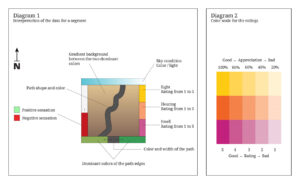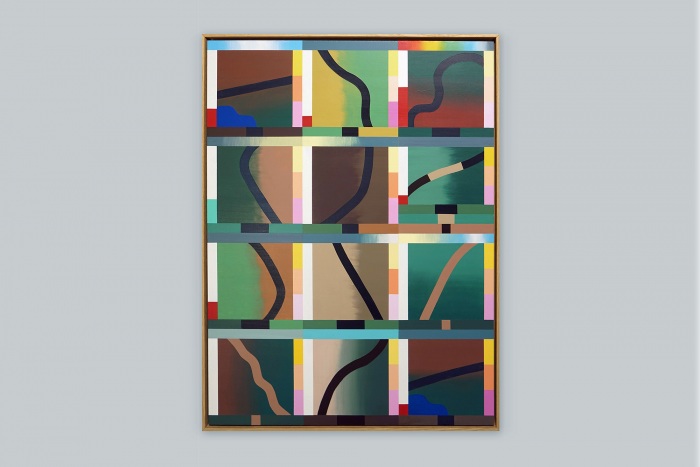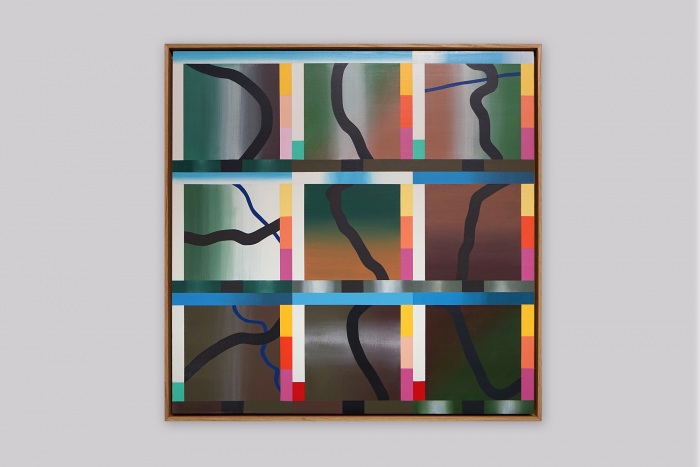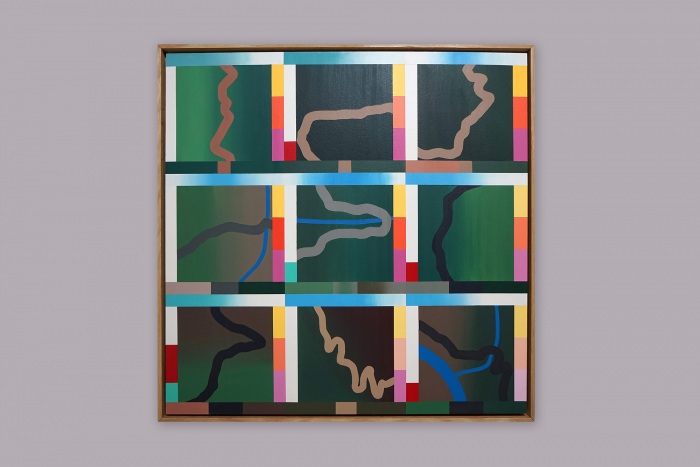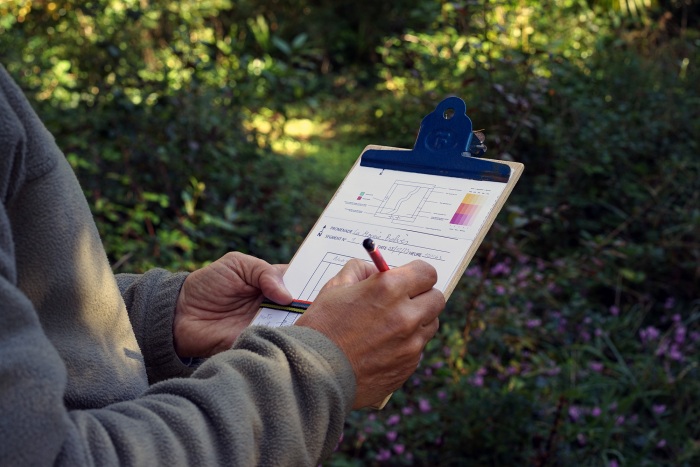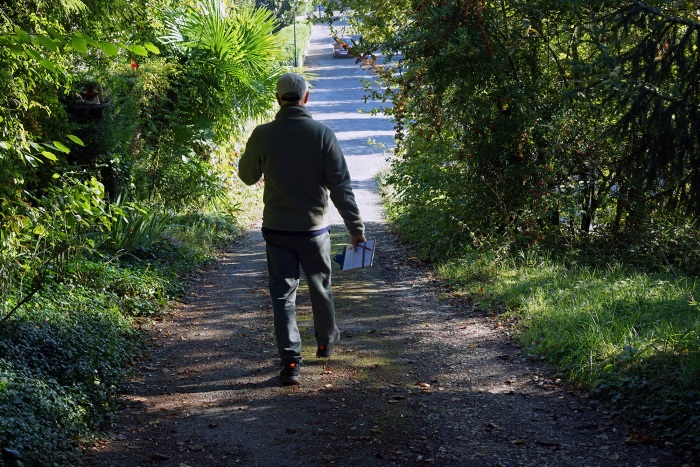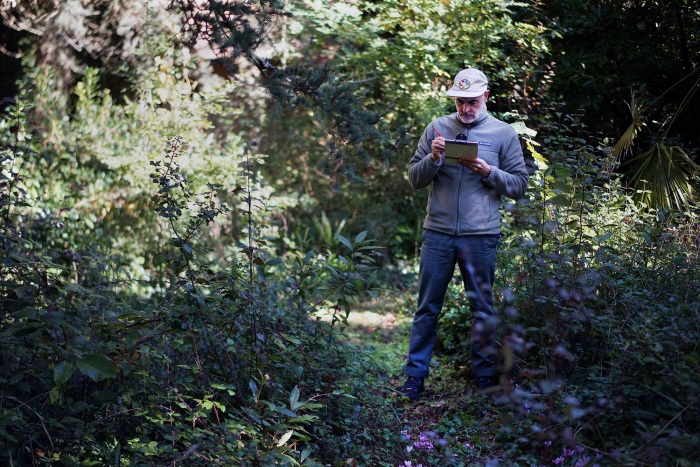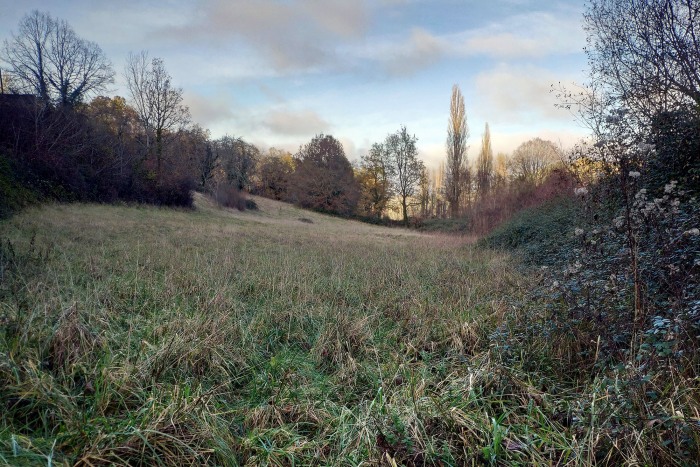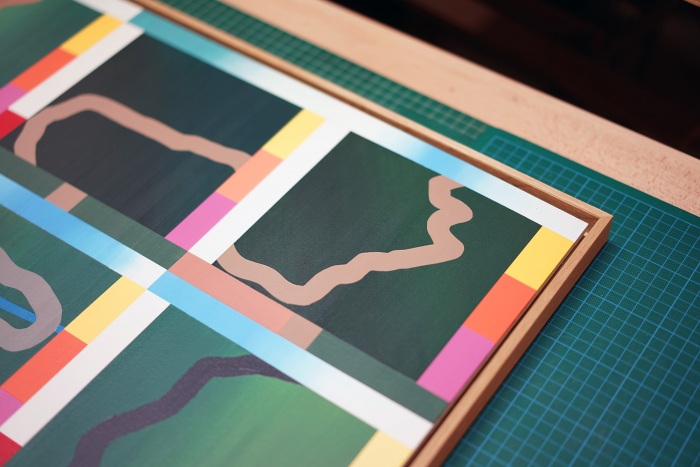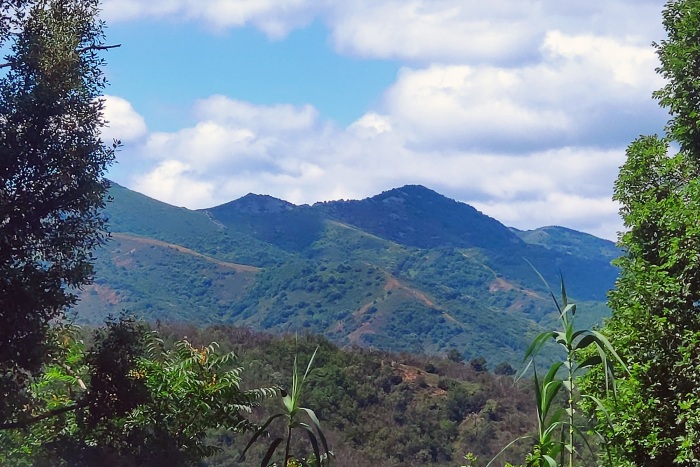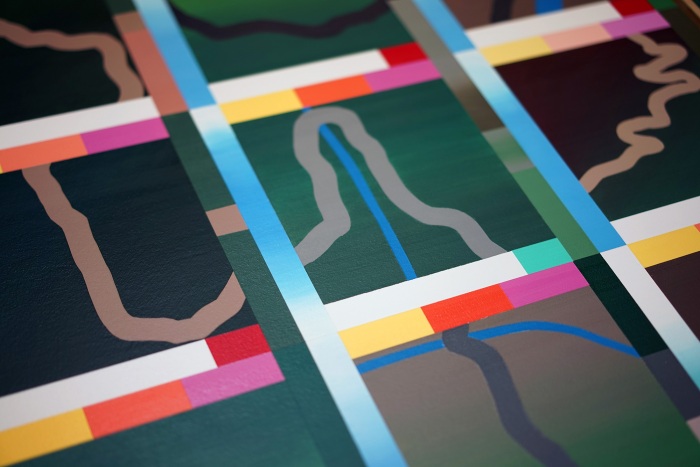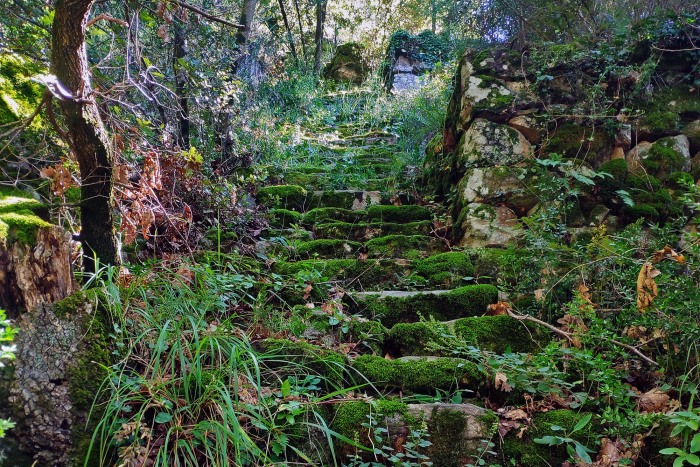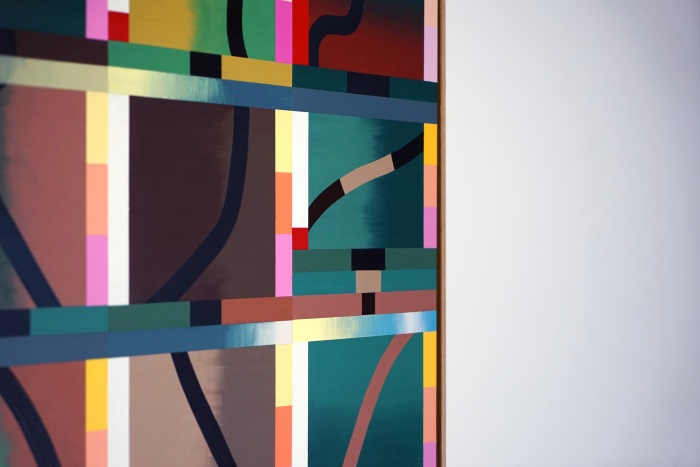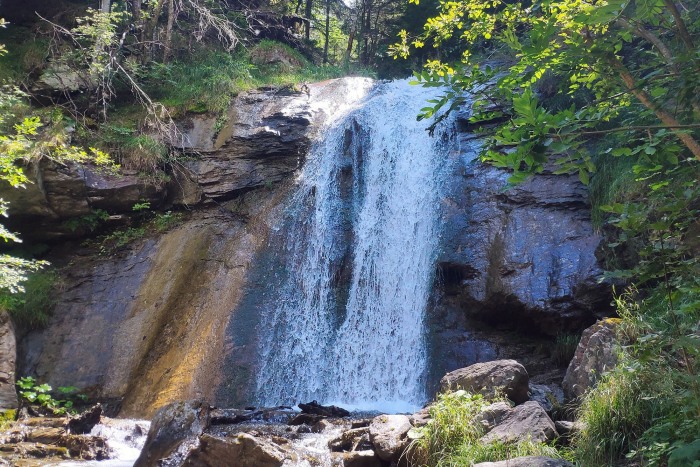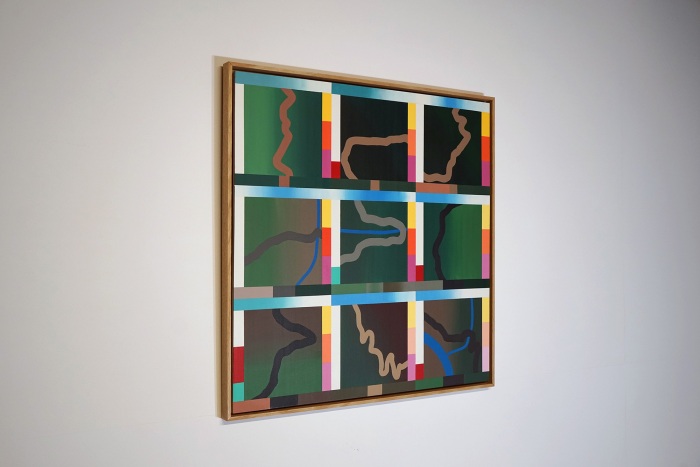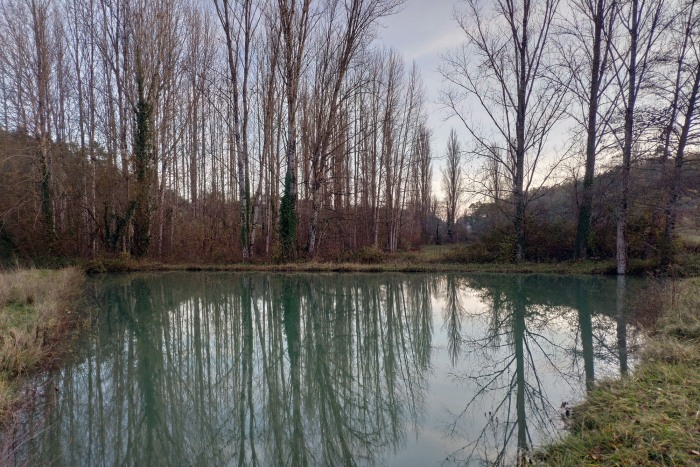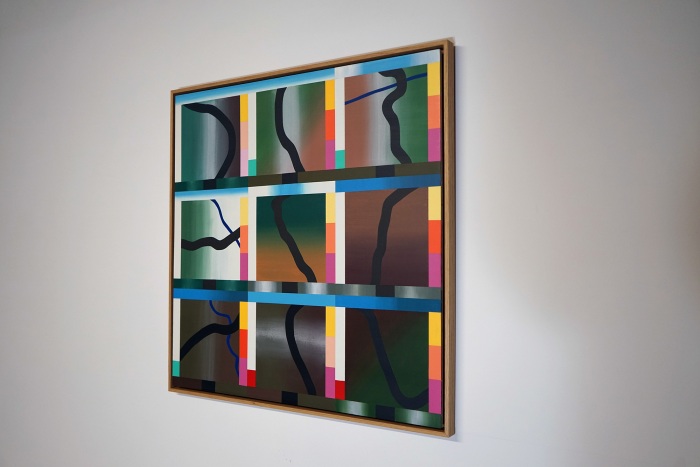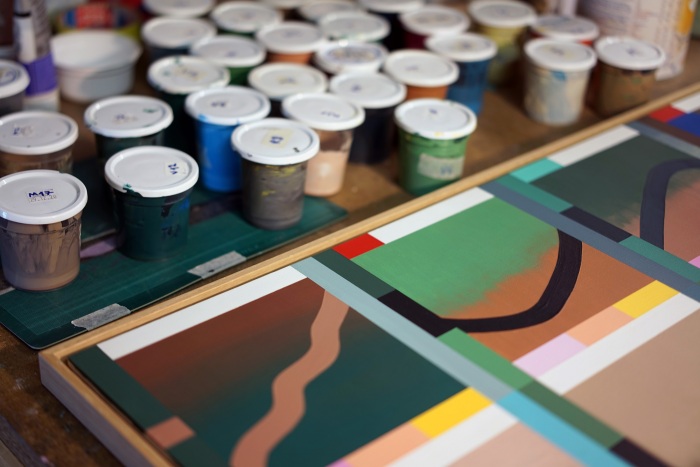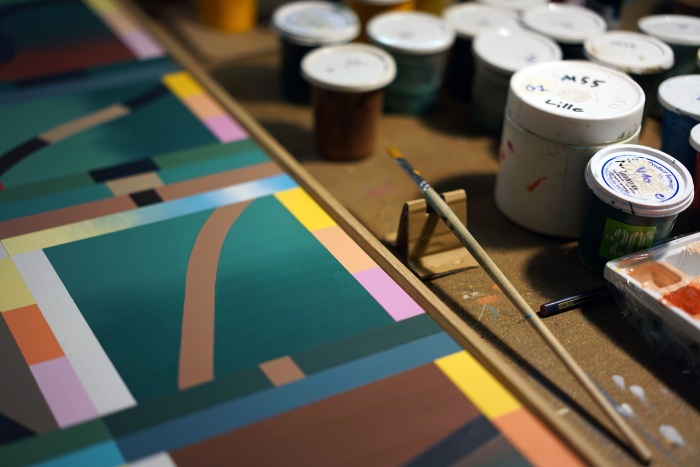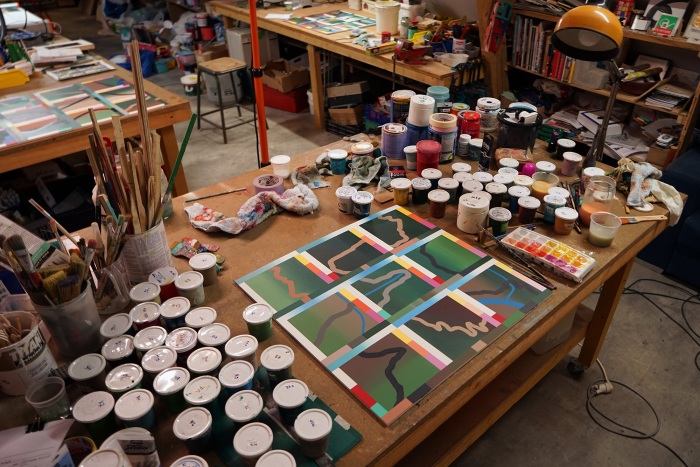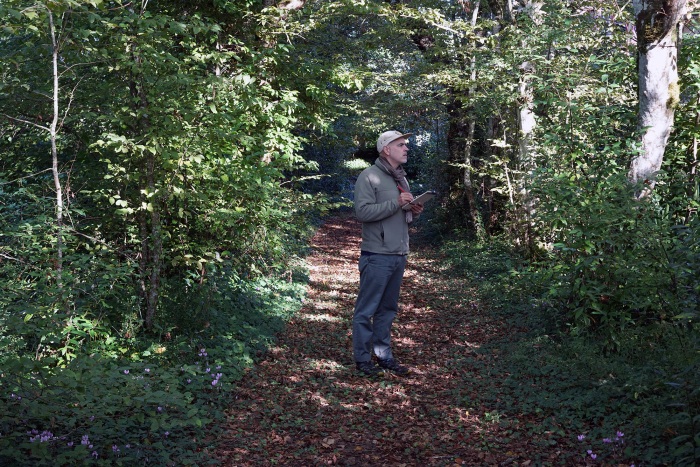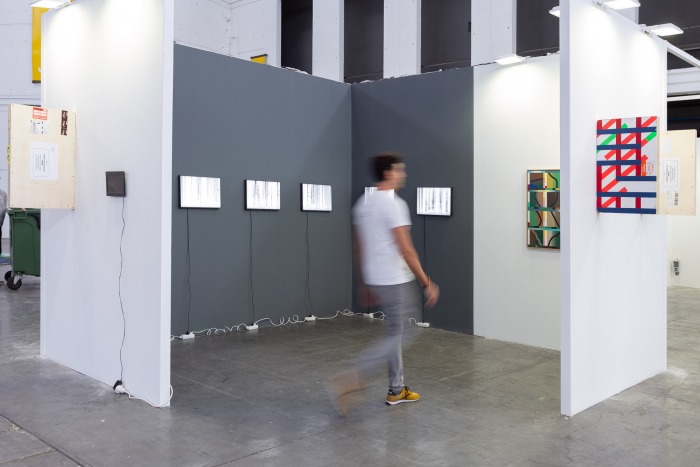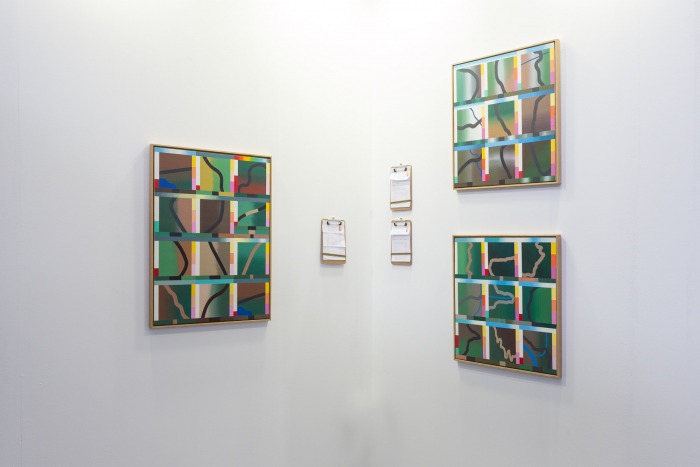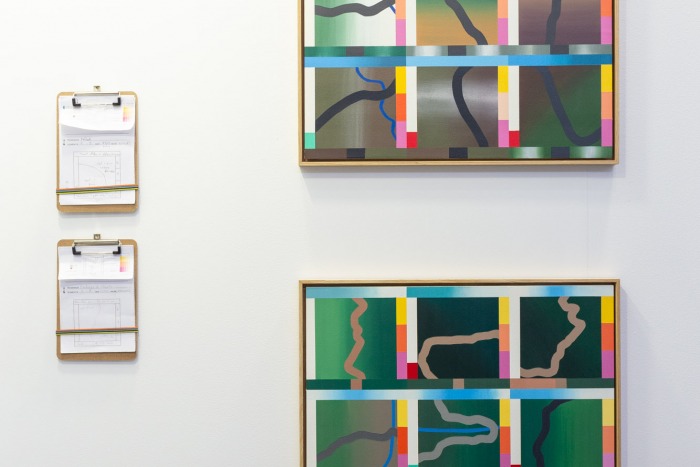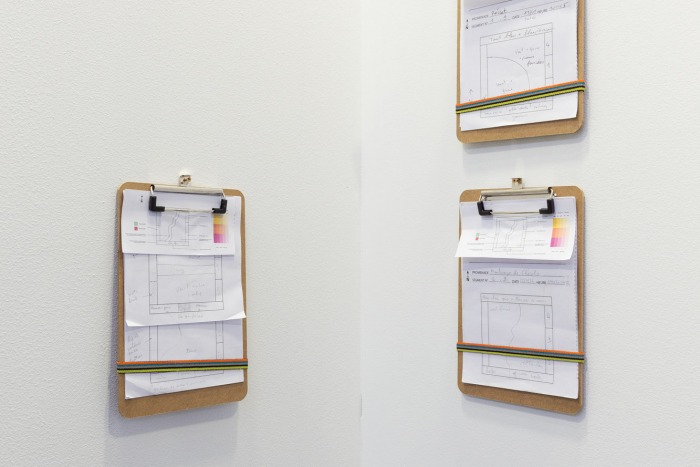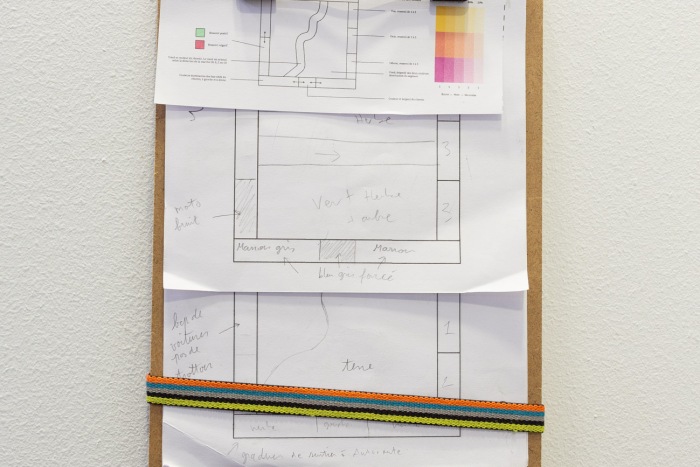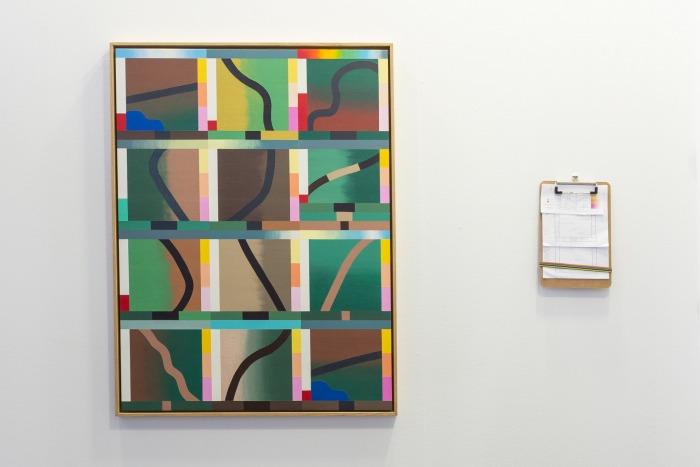Ongoing project
Belvès (Périgord Noir), France, December 2023
Pécut (Creuse), France, January 2024
Chirols (Ardèche), France, July 2024
Work first exhibited at the SWAG art fair in Barcelona with Set Espai d’Art gallery in October 2024.
Portraits of Walks (“Portraits de promenades”, sensorial and subjective system of transcribing walks)
Portraits of Walks is an experiment that continues my series around the idea of making art while walking. In most of my projects, I walk a lot. I practice walking for the sake of walking, not just to go from point A to point B. I realized that walking for the simple pleasure of it opens the door to contemplation. In Portraits of Walks, I try to emphasize this contemplation and be aware of my surroundings so that I can later transcribe my sensations into a work of art.
To create a portrait of a walk, I write down notes about what I observe or feel during a walk, and once I’m back in the studio, I compile that data to paint it into a picture.
The experiment is based on an exercise I’ve been doing for some time, which involves stopping at any point during the day, observing my surroundings, and perceiving where I am and what’s around me. It closely resembles a mindfulness technique, although it’s something I’ve always done intuitively, without knowing how to label it.
The result is a visual representation of the experience of a walk. Each painting is unique and varies depending on the location, the season, the weather, and events… It’s like I’m making a landscape painting, but in motion: the portrait of a walk at a given moment.
The system:
A portrait of a walk works like this: I choose a looped walk with a certain number of segments (usually between 9 and 12) and I walk through those segments. What I call a segment is a portion of the walk between two points where I need to make a decision. That is, I walk, and when I reach an intersection, the segment ends, and the next one begins. I note down the data of the segment I just walked and prepare to start the next one.
What I note down are subjective data about my appreciation of what I see, hear, smell, the dominant colors, the path’s layout (its width, its color and boundaries), the state of the sky, and the presence of water. I also record if there were any particularly positive or negative events during that segment. For example, the scent of a blooming tree would be very positive in terms of smell, while a barking dog would be negative in terms of sound and perception. For sight, hearing, and smell, I assign scores on a scale of one to five, which are later translated into a color scale in the painting.
At each stop, at the end of each segment, I collect all that data on a form. When I finish the walk, I compile the forms and, back in the studio, I interpret the recorded data to create the painting.
